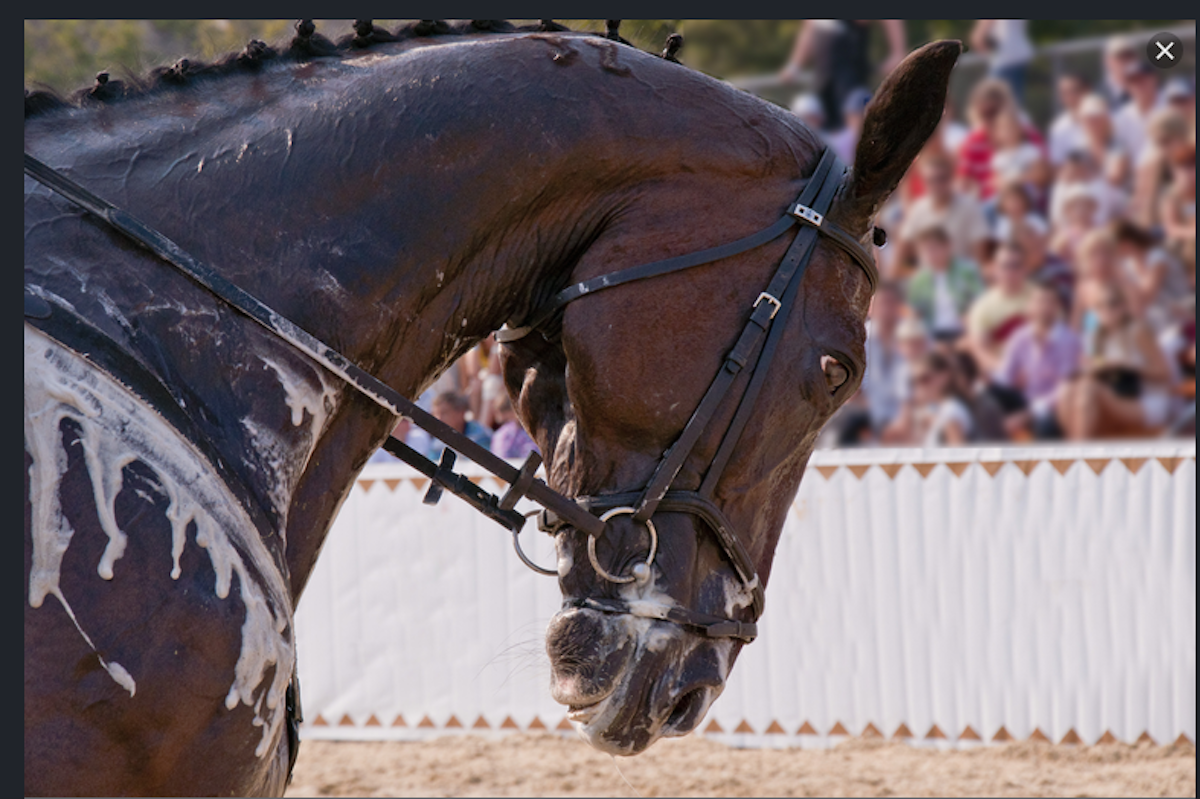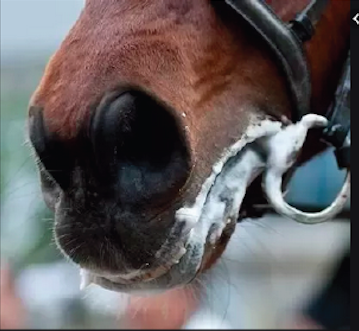It means the person riding or viewing the horse wrongly thinks the horse is well-exercised.
Horses should not be worked so hard that they produce sweaty foam on their bodies, as shown in the photo above. It puts them at risk of serious electrolyte depletion, and excessive muscle fiber breakdown (rhabdomyolysis) that can dangerous.
In extreme cases, the horse can "tie up" (Tying Up Syndrome). When horses tie up, their muscles become stiff and painful, they sweat heavily, tremble, and blow (exhale loudly). They are often reluctant to move, and their urine turns a brown color, indicating blood due to muscle breakdown. You should call a vet if your horse ties up, but in the meantime, you should give your horse electrolytes to help replace the minerals and antioxidants that were lost during the intense workout. Here are a couple of good brands.
Some people refer to a horse that is foamy around the bit like this as "well-lathered".
Foam around the bit isn't dangerous. In fact, it's a good thing. It means that the horse is relaxed enough to salivate and chew gently on the bit while being worked. Some riders at competitions spray the bit with flavors that will encourage salivation, which in my opinion is cheating. When the horse naturally salivates, it's a sign that your contact is elastic and comfortable. When the horse salivates because you've put something tasty on the bit, the salivation is no longer a sign of good rein contact.
Happy riding! Copyright Denise Cummins Jan 7 2020 The Thinking Equestrian
0 Comments
|
AuthorDenise Cummins, PhD, has 30+ years experience training horses and giving instruction in dressage and jumping, and running a successful horse business. ArchivesCategories |


 RSS Feed
RSS Feed